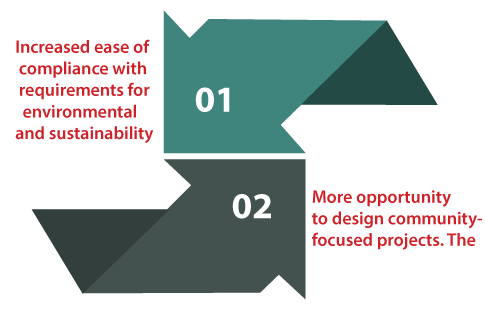What is a Greenfield project?When choosing a construction project site, architects and project managers sometimes choose between a new or abandoned site. There are pros and cons of completely new and neglected sites. The chosen location would rely on the scale of the project, the budget of the customer, and whether you have a group of experts on your team who understand how to plan for each one. Here are some things you need to note when choosing the best location for your project: What is a Greenfield Project and How Does It Differ from a Brownfield Project?A new project lacks the limitations imposed by previous work on the site. Generally, what a new project involves is development on an empty site. Architects start entirely from scratch. A new project lacks the constraints put on the site by previous work. In other words, before the project can go forward, the site could be contaminated or have existing buildings that the developers may knockdown or alter in any way. For example, land used for agricultural uses may have environmental risks, and the buildings on it may not be up to expectations. What is the main benefit of a Greenfield project over a brownfield project?It is a blank canvas that allows architects to design site construction to be more creative and forward-thinking. For starters, when HMC Architects designed a Greenfield project, the Shunde Hospital of Southern Medical University in China didn't have to overcome the site's constraints. They were willing to collaborate with city officials to place the building as close as possible to a new transit center. There were no buildings to demolish or design, we had plenty of open room to function. Advantages of Greenfield ProjectsThe following are other advantages of Greenfield developments: 
While Greenfield developments have many benefits, there are also pitfalls and they can drive project owners to choose a brownfield project instead. Why were some Brownfield Projects chosen over Greenfield Projects?The fundamental explanation of why building owners are permitted to select an industrial site over a new site is located. For example, Kaiser Permanente wants to serve as many community members as possible. The organization will give the green light to an abandoned industrial project in an ideal location. The California Kaiser Permanente Downey Medical Center, which is now under renovation, was initially abandoned. Kaiser partners collaborated with government officials to fully decontaminate the site and turn it into a new sector. When the site was decontaminated, it was as easy to use as any other Greenfield scheme. Costs and terrain constraints of the Greenfield project site may also drive homeowners to select a brownfield site. Buying brand field Greenland can be more expensive, especially when it is in a desirable location. Architects and engineers would therefore have to build expensive and time-consuming utility systems from scratch. There have never been many undeveloped lots built, so architects will need to build along natural slopes and hills or even on the land. Choosing an abandoned lot offers many opportunities, including enabling architects to choose: 
However, architects have to convert the place into a Greenfield site to develop brownfield sites like this. Transforming a Brownfield Project into a Greenfield ProjectWith some commitment, it is possible to convert virtually all brownfield sites into Greenfield sites. When transforming a brownfield approach to a Greenfield, it is easier to decontaminate the site at once instead of in phases. It is because the price of decontaminating a site would only rise with time with inflation. Decontamination of the whole site also provides architectural options for developers, who will further expand the site in the future without dealing with contamination issues. Suppose, due to its proximity and lower costs, you select a Greenfield site for its simplicity and flexibility or a brownfield site. In that case, it is important to employ an experienced design firm. In each site, architects will help you balance the pros and cons of building and select the right one based on your criteria and budget. You can create a stunning structure representing the surrounding community with a team of design professionals at your side.
Next TopicHard disk definition and function
|
 For Videos Join Our Youtube Channel: Join Now
For Videos Join Our Youtube Channel: Join Now
Feedback
- Send your Feedback to [email protected]
Help Others, Please Share









